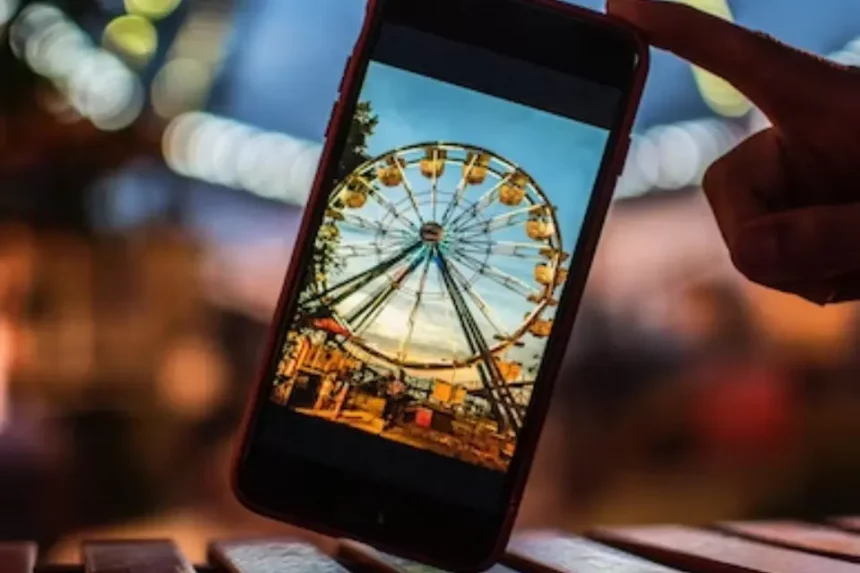Have you ever wanted to take amazing photos with your smartphone but weren’t sure where to start? Taking photos with your phone can be daunting, but with a few tips and tricks up your sleeve, you can easily turn your smartphone into a powerful photography tool. Whether you’re looking to take pictures of landscapes, portraits, or still life, there are plenty of ways to get the perfect shot. With the right tips and tricks, you can learn how to take stunning photos with your smartphone in no time. From mastering the basics of composition to exploring the world of editing, this guide will provide all the helpful advice you need to create beautiful photos with your smartphone. So, get ready to learn the basics of smartphone photography and start capturing your best shots today!
Basics of Composition
Composition is the art of arranging a subject in a way that invites the eye to wander through it. It’s the way a photographer arranges their subject and the elements around it, so the viewer is able to understand what they’re looking at. It’s the way you decide to frame a photograph and is a fundamental part of photography. The composition of your image is important as it can impact the way your photo is perceived. An image with poor composition can look cluttered, uninteresting, or even ugly, whereas a well-composed image can draw the viewer in, even if it’s just a still life. There are two main aspects to consider when it comes to composition: subject placement and the frame. There are a few other aspects that can impact the overall look of your image, but this is the most important.
Tips for Taking Great Photos
When you’re just starting out with photography, it can be easy to get caught up trying to achieve a perfect image. While it’s important to practice composition, you should also try to enjoy the process. If you’re feeling stressed out by the idea of “getting it right”, it might be helpful to remember that you don’t have to get it right the first time. Instead, think of taking photographs as a process of learning. Experiment with different techniques, try new things, and most importantly, have fun. Additionally, there are a few simple tips that can help you get the most out of your photography practice. These include:
Take photos on a consistent basis Develop a camera bag Learn how to edit – Share your photos While it’s important to enjoy the process, if you want to see real results, you have to be consistent. So, grab your camera and start taking photos today!
1. Editing Basics
Editing is an important part of photography, and it doesn’t have to be complicated. You can use basic photo editing apps to do simple things, like brightening images, removing red eye, or adding filters, or you can use more advanced programs to do more complicated things, such as correcting the colour in an image. There are so many things you can do with editing, but the first thing you should do is get rid of the things you don’t like. You can do this by using a program that has a “spot healing” tool. This tool basically gets rid of any unwanted objects in the image, like hairs or spots. After you’ve cleaned up the image, you can start doing more creative things. You can add filters, adjust colors, or even add text to the image. Editing your images is an important part of photography, and there are lots of ways to do it.
2. Filters and Effects
Filters are used to change the look of an image by applying a colour or pattern over the top of your photo. This is a quick and simple way to edit your photos, and most editing apps will have a filter option. When it comes to choosing filters, you can either select from a pre-made set or you can make your own. You can apply filters to single images or to a series of images to create a consistent look. While filters are a great tool for quickly editing images, they can sometimes look overly edited or “fake”, so be careful not to overuse them. You can also use effects in addition to filters. These are a bit different from filters, as they don’t change the colour of your image. Effects are used to add things to your image, such as adding snow or water droplets. You can also use effects to add specific things, like adding fire to an image.
3. Creative Photography Techniques
Sometimes you’ll want to take photos that look more “artistic” or have a different vibe than your average travel or selfie shots. You can do this by trying out a few different creative photography techniques. One technique is called “creative blur”, which is when you want a blurry background but still want your subject to be clear. You can use a slower shutter speed to do this, or you can use a tool that creates a soft blur in the image, like the “frogged” look. Another technique is called “long exposure”, which is when you use a slower shutter speed to create artistic photos with motion in them. These photos can sometimes look like they have a watercolour effect. If you have a colourful subject, you can use a “colour splash” effect to make your image pop.
4. Tips for Taking Better Portraits
If you’re interested in taking better portraits with your smartphone, it can help to know a few things about lighting and posing. When it comes to lighting, you want to avoid shadows on the face, so try to find a well-lit area away from direct sunlight. Next, make sure your light source is at least a couple of feet away from your subject. This will prevent your subject from squinting. For posing, the most important thing is to get to know your subject. It might sound silly, but getting to know someone can help you figure out what makes them feel comfortable in front of the camera. Keep in mind that, just like with any other photography type, there’s no one right way to take a portrait. Instead, think about what you want your portrait to convey, and then use the tips above to help you achieve that look.
5. Tips for Taking Better Landscape Photos
If you’re interested in taking better landscape photos, the best thing you can do is go outside and start taking photos. You can also study the work of other photographers and see what inspires you. Keep in mind that landscape photography is more than just taking a photo of a landscape. It’s more about creating an interesting image that tells a story or evokes an emotion. When taking landscape photos, it can also be helpful to have a bit of knowledge on the elements of photography. For example, it can be useful to know what the best time of day is for outdoor photography, or what to look for in terms of composition. Additionally, there are a few things you can do to improve your landscape photography. For example, you can try to find interesting locations, experiment with different angles and viewpoints, and invest in some good photography gear.
6. Tips for Taking Better Still Life Photos
Still life photography is a type of photography where the photographer arranges objects to create a composition. When taking still life photos, it’s important to consider what you’re trying to create. For example, do you want your photo to be more about the colours of the objects in the photo or the shapes? Once you know what you’re trying to achieve, it’s time to start arranging your objects. When arranging items, there are a few things to keep in mind. First, you want to avoid putting too many things in the frame. You also want to avoid creating busy and cluttered still life photos. To avoid this, it might help to keep a few things in mind, such as “less is more” and “rule of thirds”.
Conclusion
Taking amazing photos with your smartphone doesn’t have to feel overwhelming. There are a few simple tips and tricks you can use to improve your photos, from mastering the basics of composition to editing your photos with helpful apps. And with practice, you can improve your photography skills quickly, so you can start taking even better photos in no time. With these tips and tricks, you can turn your smartphone into a powerful photography tool and create beautiful images wherever you go. So, what are you waiting for? Get ready to take amazing photos with your smartphone today!







